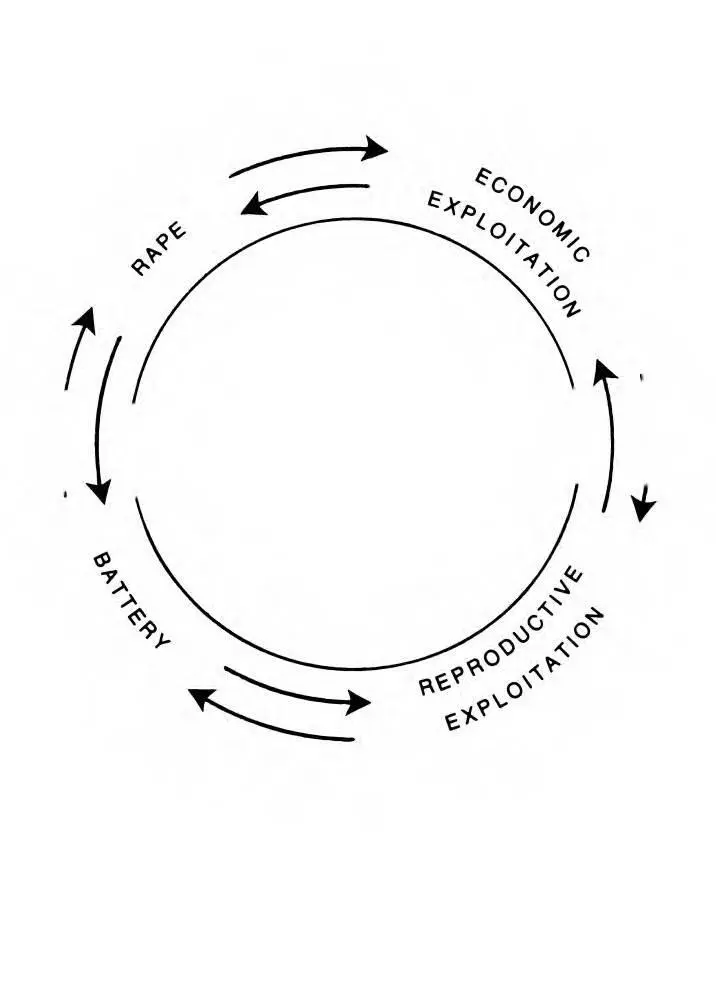Andrea Dworkin - Right-wing Women
Здесь есть возможность читать онлайн «Andrea Dworkin - Right-wing Women» весь текст электронной книги совершенно бесплатно (целиком полную версию без сокращений). В некоторых случаях можно слушать аудио, скачать через торрент в формате fb2 и присутствует краткое содержание. Жанр: Старинная литература, на английском языке. Описание произведения, (предисловие) а так же отзывы посетителей доступны на портале библиотеки ЛибКат.
- Название:Right-wing Women
- Автор:
- Жанр:
- Год:неизвестен
- ISBN:нет данных
- Рейтинг книги:4 / 5. Голосов: 2
-
Избранное:Добавить в избранное
- Отзывы:
-
Ваша оценка:
- 80
- 1
- 2
- 3
- 4
- 5
Right-wing Women: краткое содержание, описание и аннотация
Предлагаем к чтению аннотацию, описание, краткое содержание или предисловие (зависит от того, что написал сам автор книги «Right-wing Women»). Если вы не нашли необходимую информацию о книге — напишите в комментариях, мы постараемся отыскать её.
Right-wing Women — читать онлайн бесплатно полную книгу (весь текст) целиком
Ниже представлен текст книги, разбитый по страницам. Система сохранения места последней прочитанной страницы, позволяет с удобством читать онлайн бесплатно книгу «Right-wing Women», без необходимости каждый раз заново искать на чём Вы остановились. Поставьте закладку, и сможете в любой момент перейти на страницу, на которой закончили чтение.
Интервал:
Закладка:
E CONOMI C
R A P E
EXPLOI TATI ON
P R O S TI TU T I O N
DRAWING 1. THE CONDITION OF WOMEN


women, a lateral view of the female bottom of sex hierarchy. Rape,
battery, economic exploitation, and reproductive exploitation are
the basic crimes committed against women in the sex-class system
in which they are devalued because they are women. The crimes
are points on a circle because it is a closed system , from nowhere to
nowhere. These specific crimes are each committed against huge
percentages of the female population at any given time. Rape, for
instance, consists not only of police-blotter rape but also marital
rape, incestuous abuse of girls, any sex that is coerced. Battery is
estimated to have happened to 50 percent of married women in the
United States alone. All housewives are economically exploited; all
working women are. Reproductive exploitation includes forced
pregnancy and forced sterilization. There are few female lives not
touched by one, two, or three of these crimes and significantly
determined by all of them. At the heart of the female condition is
pornography: it is the ideology that is the source of all the rest; it
truly defines what women are in this system — and how women are
treated issues from what women are. Pornography is not a metaphor for what women are; it is what women are in theory and in practice. Prostitution is the outer w all, sym bolically the mirror reflection of the pornography, metaphorically built out of brick, concrete, stone, to keep women in—in the sex class. Prostitution is the all-encompassing condition, the body trapped in barter, the body
imprisoned as commodity. W ith respect to the circle of crim es—
rape, battery, reproductive exploitation, economic exploitation—
the crimes can be placed anywhere in the circle in any order. T hey
are the crimes of the sex-class system against women; they are the
crimes that keep women women in an immovable system of sex
hierarchy. T hey are crimes committed against women as women.
Economic exploitation is a specific of women’s condition; it is not a
sex-neutral political category into which the experience of women
sometimes falls. Women are segregated in job ghettos as women;
the lower pay of women is systematic; the sale of sex is a funda


mental dimension of economic exploitation, whether in prostitution, marriage, or in the marketplace; when women move in large numbers into high-status jobs (male jobs), the jobs lose status (become female jobs); doing the same or comparable jobs as men, women get paid less. Economic exploitation is a key crime against
women but it is not the same economic exploitation that men experience. The construction of causality among the crimes or even the establishment of sequentiality (in which order the crimes appeared
in history or prehistory) is ultimately irrelevant. It does not matter
whether rape came first and caused the systematic economic degradation of women, or whether economic exploitation created conditions in which the production of children got the value it now has, or whether men batter because of jealousy over women’s reproductive capacity, or whether the etiology of rape is in the superior physical strength of men to women discovered in acts of battery
that later became sanctioned and systematic. One can follow the
circle around in either direction (see drawing 2) and construct marvelous theories of causality or sequentiality, most of which are plausible and interesting; and one can try to prioritize the political
importance of the crimes. But what must matter now is the condition of women now: these crimes are now its features, its characteristic events, its experiential absolutes, its inescapable attacks on women as women. These crimes are real, systematic, and define
the condition of women. The relationships between them do not
matter so much as the fact that they are facts: equal, essential,
basic facts. Seen in this light, prohibition against lesbianism, for
instance, is not the same kind of equal, essential, basic fact, nor is
lesbianism an obvious or sure road to freedom. Lesbianism is a
transgression of rules, an affront; but its prohibition is not a basic
constituent part of sex oppression and its expression does not substantively breach or transform sex oppression. There is no state of being or act of w ill, including lesbianism, that changes the circle:
there is no state of being or act of will that protects a woman from


D R A WI NG 2. THE C I R C L E OF
C R I M E S A G A I N S T WOME N


the basic crimes against women as women or puts any woman outside the possibility of suffering these crimes. Great wealth does not put a woman outside the circle of crimes; neither does racial supremacy in a racist social system or a good job or a terrific heterosexual relationship with a wonderful man or the most liberated (by any standard) sex life or living with women in a commune in a
pasture. The circle of crimes is also not changed by how one feels
about it. One can decide to ignore it or one can decide it does not
apply for any number of reasons, emotional, intellectual, or practical: nevertheless it is there and it applies.
Going back to the whole model—the circle, the pornography at
the center of it, the all-encompassing wall of prostitution that circumscribes it—it does not matter whether prostitution is perceived as the surface condition, with pornography hidden in the deepest
recesses of the psyche; or whether pornography is perceived as the
surface condition, with prostitution being its wider, more important, hidden base, the largely unacknowledged sexual-economic necessity of women. (See drawings 3 and 4. ) Each has to be understood as intrinsically part of the condition of women—pornography being what women are, prostitution being what women do, the circle of crimes being what women are for. Rape, battery, economic exploitation, and reproductive exploitation require pornography as female metaphysics so as to be virtually self-justifying, virtually invisible abuses; and they also require the wall of prostitution confining women (meaning that whatever women do is within the bounds of prostitution) so that women are always and absolutely accessible. The heart of pornography and the wall of prostitution mirror each other in that both are meant to mean—and concretely do mean in the male system—that women deserve the
Читать дальшеИнтервал:
Закладка:
Похожие книги на «Right-wing Women»
Представляем Вашему вниманию похожие книги на «Right-wing Women» списком для выбора. Мы отобрали схожую по названию и смыслу литературу в надежде предоставить читателям больше вариантов отыскать новые, интересные, ещё непрочитанные произведения.
Обсуждение, отзывы о книге «Right-wing Women» и просто собственные мнения читателей. Оставьте ваши комментарии, напишите, что Вы думаете о произведении, его смысле или главных героях. Укажите что конкретно понравилось, а что нет, и почему Вы так считаете.












